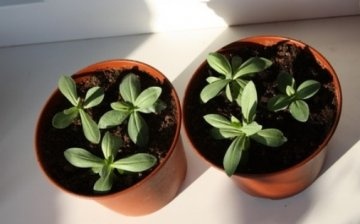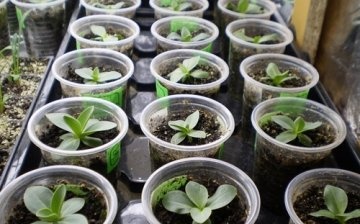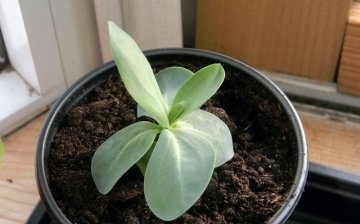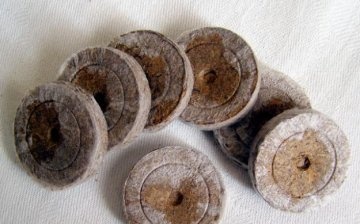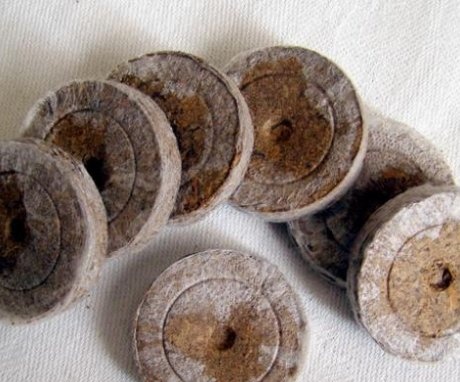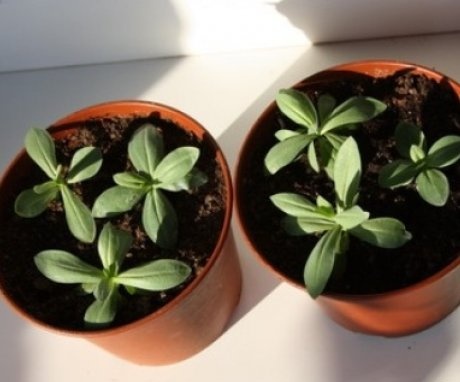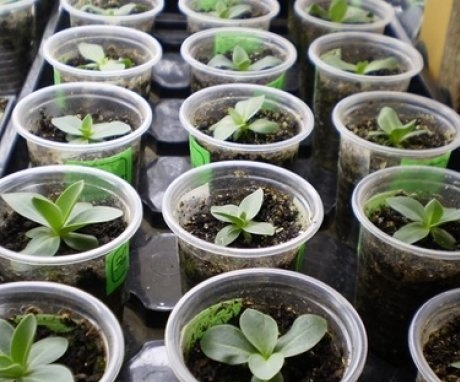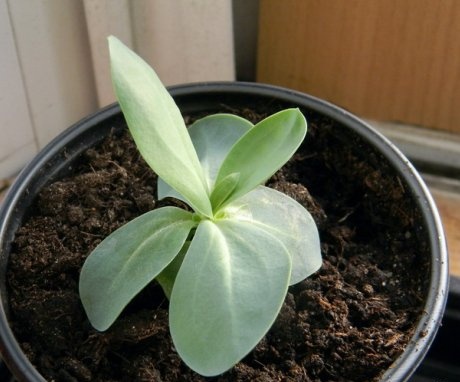Growing eustoma from seeds in peat tablets
In Russia, eustoma (lisianthus) is quite rare. Nevertheless, the number of fans of this amazing plant is gradually growing. Eustoma amazes with its magnificence, and she can fall in love and charm at first sight. Everyone sees their beauty in it: for some, slightly open buds look like roses, and blossoming flowers remind someone of poppies.
Content:
Many gardeners, even experienced ones, are afraid to grow eustoma due to the difficulties in care. But it's worth a try! Before choosing a plant variety, you should decide where the flowers will grow: at home or in the garden. For a garden, you can choose varieties that form a tall bush, and for indoor cultivation, non-sprouted varieties are better suited.
Sowing eustoma seeds
Grow eustoma can be from seeds. It is more comfortable to do this with the help of peat tablets, which must be prepared before sowing by dropping into a vessel with water. When the tablets are swollen, seeds can be sown on their surface. For convenience, the tablets are placed in disposable cups. The best time for sowing seeds for seedlings - December, in May-June, plants will already be able to please with the first flower stalks, and in June-July - with gorgeous flowers.
Eustoma seeds are tiny and it will be difficult to achieve measured sowing. In order to sow the seeds evenly, you can use a toothpick. Picking up one achene by another with a moistened tip of a toothpick, arrange them in an orderly manner on the surface of the tablet. Care should be taken that the seeds do not touch, otherwise they will interfere with each other during growth. The tablets need to be irrigated periodically to keep them moist. It is more convenient to do this with a spray bottle.
With sufficient light and moisture, sprouts can appear on the 12-14th day.
It is very convenient to sow eustoma seeds rolled into granules. It is enough to spread the granules on the moistened surface of peat tablets and cover with ordinary glass. Place the container with tablets in a warm and well-lit place, periodically opening the glass for ventilation. Seeds planted in this way can sprout already on the 8-10th day. The tiny sprouts that appear slow down their growth and temporarily stop the growth of vegetative mass, since at this stage the process of development of the root system is underway.
When the seedlings get stronger and form 3-4 leaves, you can start dive... When 4-5 pairs of leaves are formed, the plants can be planted in separate pots, several pieces each. For the compactness of the bush and giving it a beautiful shape, they carry out topping tops. In this case, flowering occurs somewhat later than usual.
Planting eustoma in the ground
It is possible to plant seedlings in the ground only after the frosts recede and real full heat comes. Plants must be planted very carefully, without disturbing the roots, because eustoma does not tolerate damage to the root system very well. Plants are planted in well-moistened soil and at the same depth at which they were in seedlings.
Lisianthus prefers a light substrate consisting of peat, garden soil and sand.It is not necessary to allow increased acidity of the soil, otherwise chlorosis of the leaves may develop and the growth of the plant will slow down. Adding pieces of charcoal to the soil mixture will have a good effect on the growth of seedlings. For better survival, the plants are watered abundantly for 3 weeks.
Nutritional fertilization with mineral fertilizers has a beneficial effect on the growth of eustoma and the formation of buds. You need to start it no earlier than 2-3 weeks after planting seedlings in the ground. The optimal nutrient intake regimen is once a week.
Eustoma feels better in bright diffused lighting. With a lack of light, the plant weakens, which affects the formation of buds. Some of the buds being laid may not open, dry out and die. If you plant lisianthus in a shaded area, the stems of the plant will often lie to the ground and then you will need a special support for them.
The most difficult moment in growing eustoma is establishing the correct watering regime. During the period of intensive growth, flowers require abundant watering, and in winter watering cut. The soil should be constantly moistened, but at the same time, waterlogging should not be allowed, since the roots rot from excess moisture.
It is better to water the plants as the top soil layer dries up, while trying to prevent water from getting on the leaves. High humidity can provoke the appearance of a fungal disease in the plant, in which gray mold forms on the underside of the leaves.
The optimum temperature for the comfortable growth of eustoma is + 20-25 C. In winter, the plant is kept in a cool room at a temperature of + 10-15 C.
In order to extend the flowering period of the eustoma, you should cut off the withered flowers. This contributes to the formation of new flowers, and then the plant will delight you with spectacular flowers of various shades for some time.




